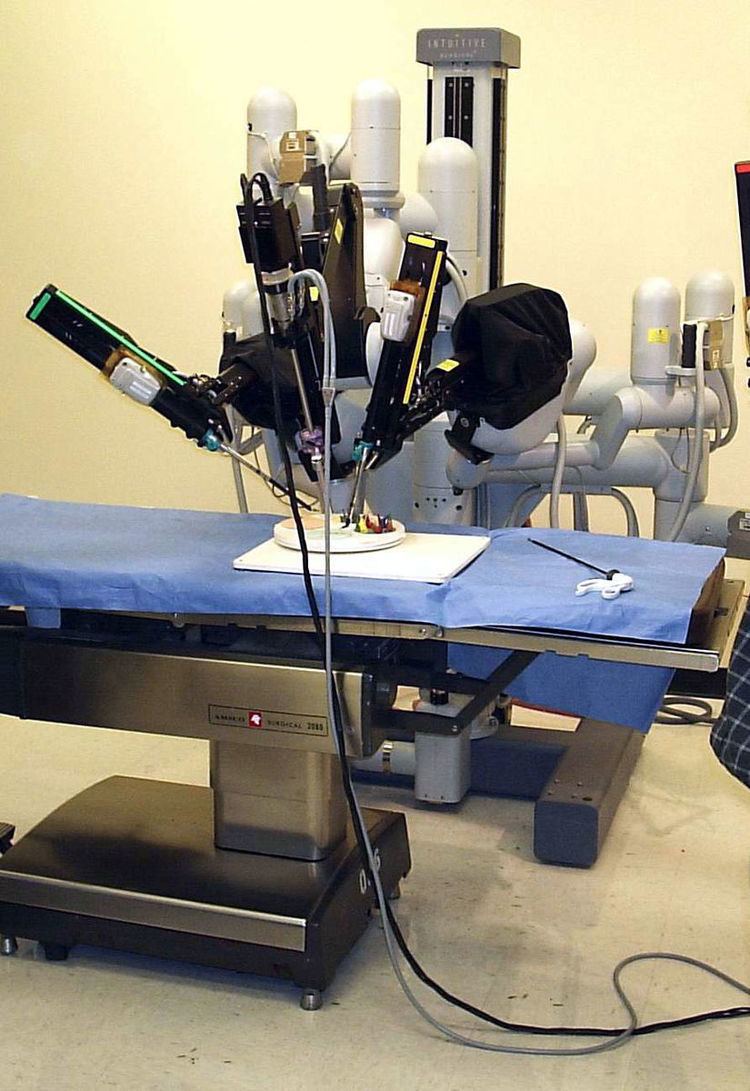A medical robot is a robot used in the medical sciences. They include, but are not limited to, surgical robots. These are in most telemanipulators, which use the surgeon's actions on one side to control the "effector" on the other side.
Surgical robotsThese robots either allow surgicaddal operations to be carried out with greater precision than an unaided human surgeon, or allow
remote surgery where a human surgeon is not physically present with the patient.
Rehabilitation robots This group facilitates and supports the lives of infirm, elderly people, or those with dysfunction of body parts effecting movement. These robots are also used for rehabilitation and related procedures, such as training and therapy.
Biorobots A group of robots designed to imitate the cognition of humans and animals.
Telepresence robotsAllow off-site medical professionals to move, look around, communicate, and participate from remote locations.
Pharmacy automationRobotic systems to dispense oral solids in a retail pharmacy setting or preparing sterile IV admixtures in a hospital pharmacy setting.
Disinfection robothas the capability to disinfect a whole room in mere minutes, generally using ultraviolet light technology. They are being used to fight Ebola virus disease.
Pulsed light (PL) is a technique to decontaminate surfaces by killing MOs using pulses of an intense broad spectrum, rich in UV-C light. UV-C is the portion of the electromagnetic spectrum corresponding to the band between 200 and 280 nm. PL works with Xenon flash lamps that can produce flashes several times per second. Disinfection robots use pulsed UV light.

